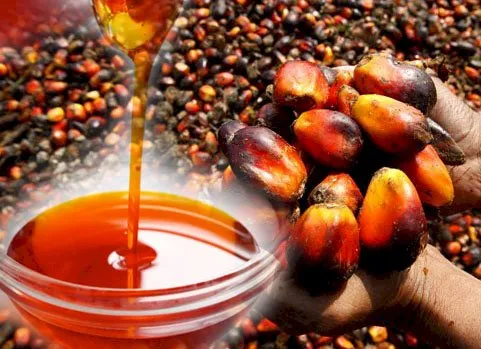Table of Contents
1. Overview
Oysters are bivalve mollusks belonging to the families Ostreidae (true oysters) and Pteriidae (pearl oysters). Renowned for their culinary luxury and ecological role as water filterers, they thrive in coastal zones worldwide. This guide explores their biology, economic impact, culinary versatility, and sustainability challenges.
2. Global Varieties
- Pacific Oyster (Crassostrea gigas): Native to Japan; most farmed globally, with a crisp, briny flavor.
- Eastern Oyster (Crassostrea virginica): Atlantic Coast of North America; buttery, sweet notes.
- European Flat Oyster (Ostrea edulis): Prized as "Belon" in France; metallic, mineral-rich taste.
- Olympia Oyster (Ostrea lurida): Pacific Northwest USA; small, coppery flavor.
- Sydney Rock Oyster (Saccostrea glomerata): Australia; creamy, umami-rich.
3. Price Factors
- Species & Rarity:
- Belon oysters: $3–$5 per piece (luxury markets).
- Pacific oysters: $1–$3 per piece (common).
- Size: Larger grades (e.g., "No. 1") cost more.
- Farming Method: Wild-harvested often pricier due to labor-intensive collection.
4. Physical Traits
- Colors: Shells range from gray-white to green/black (influenced by minerals).
- Smell: Fresh seawater aroma; avoid if sour or stagnant.
- Flavor: Briny, sweet, metallic, or creamy notes shaped by merroir (marine terroir).
5. Culinary Uses
- Raw: Served on ice with lemon or mignonette (freeze 24h for safety if raw).
- Grilled: Topped with garlic butter or Parmesan.
- Fried: Battered in cornmeal for po' boys.
- Stews/Soups: Oyster chowder, Rockefeller (baked with spinach and cream).
- Quick Recipes:
- Oysters Kilpatrick: Grill with bacon, Worcestershire, and BBQ sauce.
- Oyster Shooters: Raw oysters in vodka, tomato juice, and horseradish.
6. Nutrition & Health Benefits
- Macronutrients: Low calorie (68 kcal/100g), high protein (7g/100g), rich in omega-3s.
- Vitamins/Minerals: Zinc (immune health), B12 (energy), iron, calcium (from shells).
- Risks: Raw oysters may carry Vibrio bacteria; cook for vulnerable groups.
7. Cultivation & Capture
- Wild Harvest: Hand-picked at low tide or dredged in shallow waters.
- Aquaculture:
- Off-Bottom Farming: Oysters grown in cages/bags (France, USA).
- Rack-and-Bag Systems: Tidal zones (Asia, Australia).
- Major Producers:
- Wild: USA (Chesapeake Bay), France (Marennes-Oléron).
- Farmed: South Korea, Japan, Australia.
8. Byproducts
- Shells: Ground for calcium supplements, poultry feed, or landscaping.
- Pearls: Produced by pearl oysters (Pinctada spp.); luxury jewelry.
- Shellfish Meal: Fertilizers or aquaculture feed additives.
9. Processing & Storage
- Live Storage: Keep refrigerated (4–10°C) in damp cloths; consume within 7–10 days.
- Freezing: Shuck and freeze meat in liquor (3–6 months).
- Canning: Rare; preserved in brine or smoked for specialty markets.
10. Major Producers & Trade
- Top Producers:
- France, USA, South Korea, China, Japan.
- Exporters: France, Canada, New Zealand.
- Importers: EU, USA, Hong Kong, Singapore.
11. Climate Conditions
- Temperature: 10–25°C (varies by species; e.g., Pacific oysters tolerate colder waters).
- Salinity: 15–30 ppt (brackish estuaries ideal).
- Water Quality: Clean, nutrient-rich waters for optimal growth.
12. Diseases & Risks
- Dermo (Perkinsus marinus): Parasite affecting Eastern oysters; reduces growth.
- MSX (Haplosporidium nelsoni): Devastates Atlantic oyster populations.
- Bacterial Contamination: Vibrio vulnificus in warm waters.
13. Return on Investment (ROI)
- Farming Costs: $20,000–$50,000 per acre (seed, equipment, labor).
- Profit Margins: 25–40% in high-demand markets; ROI in 2–3 years.
14. Sustainability Challenges
- Habitat Loss: Coastal development threatens wild beds.
- Overharvesting: Declining wild populations (e.g., European Flat oysters).
- Climate Change: Ocean acidification weakens shells.
15. Conclusion
Oysters are a culinary delicacy and ecological ally, but their future hinges on sustainable farming and habitat conservation. Innovations in aquaculture and stricter wild harvest regulations are key to preserving this marine treasure.









